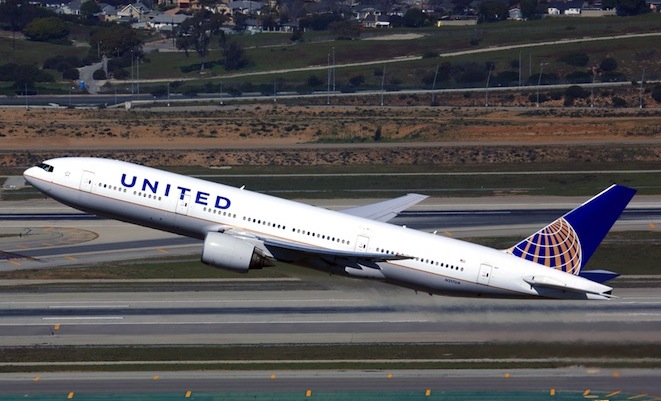
The US National Transportation Safety Board has said that the damage located within the failed engine of a United Airlines flight on Saturday appears “consistent” with metal fatigue, following a preliminary examination.
The United Boeing 777-200, registration N772UA, was performing flight UA328 to Honolulu on Saturday when it suffered an engine failure shortly after take-off from Denver
The 26-year-old aircraft had 231 passengers and 10 crew on board when the right PW4000 engine failed and caught alight at around 13,000 feet, and rained debris over homes and yards in Broomfield, Colorado, as passengers and witnesses looked on.
The NTSB has now confirmed that two blades within the plane’s failed engine were severed, one of which was cut at the root, and the other through the middle.
NTSB chairman Robert Sumwalt said at a briefing on Monday that the damage seen in the blade that was cute at the root “indicates damage consistent with metal fatigue”.
He added that the blade in question was being flown via private jet to a Pratt & Whitney lab “where it will be examined tomorrow under the supervision of NTSB investigators”.
The second damaged blade appears to have been cut in its mid-section after being struck by the first broken blade, according to the NTSB.
“It probably got hit as the other piece was separated,” Sumwalt said.
NTSB releases images Monday, Feb. 22, 2021, from its investigation of Saturday's engine failure incident on United Airlines flight 328; https://t.co/hBH2miILPe pic.twitter.com/bXyjmFQk08
— NTSB_Newsroom (@NTSB_Newsroom) February 23, 2021
He stated that the other 20 blades will be inspected for “crack arrest marks”, in order to determine if and how long the blades have been damaged or fatigued.
“This has to be done in our lab where we can measure and count the number of crack arrest marks … [and] we can come up with a pretty accurate number of when that fatigue crack was initiated,” he said.
He also stated that the NTSB would be continuing its investigation, as a number of questions still remain unanswered.
He referred specifically to the cowling, which covers the front of the plane’s engine, which fell off the engine to the ground below, as well as the fire that continued to blaze in the engine, despite power being shut off to that engine.
“We do not expect a cowling to separate like that. We certainly want to understand what caused that cowling to separate in this case,” Sumwalt said.
“As far as the fire, we have indications that the fuel to the engine was turned off so we will be looking to see what may have continued to propagate a fire.”
It comes after the US Federal Aviation Administration and planemaker Boeing both issued warnings over Boeing 777 aircraft powered by PW4000-112 engines in light of the United Airlines incident, with the FAA requiring immediate inspection of all Boeing 777s fitted with Pratt & Whitney PW4000 family engines.
Meanwhile, in a strikingly similar incident, also on Saturday, a Longtail Aviation Boeing 747-400, also powered by engines from the Pratt & Whitney PW4000 family, began to shed engine turbine parts from a blown engine, shortly after take-off in the Netherlands.
The Pratt & Whitney PW4000 is a family of high-bypass turbofan aircraft engines, and was the successor to the JT9D. It was first run in April 1984, and received its FAA certification in July 1986.
Investigations into both incidents are being conducted by local civil aviation authorities.
Aviation experts have noted that the engine blowouts that we have seen over the weekend are most likely to occur just after take-off, due to the strain placed on the engines at that time.










